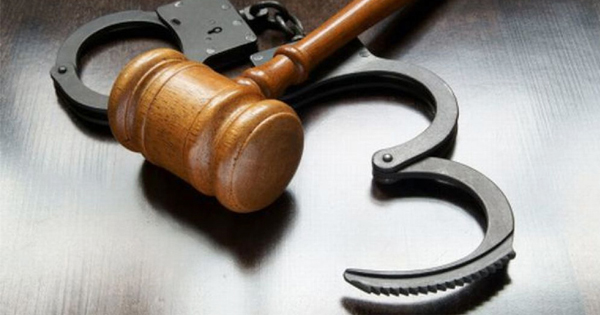When an aircraft goes down, the questions come fast and the answers take time. Families want clarity about what happened, who is responsible, and how to secure resources for medical care or to rebuild their lives. Aviation law is a specialized field with layers of federal regulation, complex engineering evidence, and high-stakes insurance issues that demand focused advocacy. This article explains how aviation accident cases are investigated and litigated in Shreveport, what agencies and experts are involved, and how liability is determined. If you need guidance tailored to your situation, Contact us to speak with a team that understands both the technical and legal dimensions of these cases.
Understanding the Complexity of Aviation Accident Litigation
Aviation accident litigation is unlike typical personal injury or wrongful death claims because it lives at the intersection of federal regulation, engineering, and state tort law. Even determining where a case can be filed can be complicated, as jurisdiction may involve the crash site, the operator’s base, the manufacturer’s location, or federal court under specific circumstances. Federal preemption can shape which claims survive and how they are framed, particularly when maintenance standards and pilot certification issues are central. Evidence spans a broad range—from cockpit voice or flight data recordings to maintenance logs, weather briefings, and air traffic control communications. Assembling this puzzle requires careful preservation efforts, a deep technical bench, and disciplined case strategy.
Key factors that shape a case
At the outset, counsel must send preservation letters to operators, maintenance providers, insurers, and manufacturers to stop the loss of critical evidence. Chain-of-custody protocols are crucial to protect the integrity of wreckage, onboard electronics, and metallurgical samples. Choice-of-law decisions can materially impact damages and defenses, especially in multi-state operations or when charter and maintenance providers are incorporated elsewhere. Coordinating with the NTSB, while respecting its unique rules about party participation and discovery limits, is essential for credible case development. Experienced Shreveport Aviation Accident Attorneys navigate these issues in parallel, keeping the investigation on track while preparing for litigation realities.
Common Causes of Aircraft Crashes and Malfunction Claims
Most aviation crashes do not stem from a single mistake or defect; rather, they emerge from a chain of events that includes human factors, mechanical issues, environmental conditions, and organizational decisions. Pilot error remains a frequent component, but the analysis goes deeper, looking at training adequacy, fatigue, decision-making under pressure, and cockpit resource management. Mechanical failures often involve design or manufacturing defects, deferred maintenance, or improper repairs; in smaller aircraft, wear and corrosion can hide until a component fails under stress. Weather plays a substantial role, especially when pilots inadvertently enter instrument meteorological conditions without appropriate training or when rapidly changing microclimates outpace forecasts. Air traffic control communications, runway conditions, and fuel quality all add layers that must be examined with precision.
From cockpit decisions to component defects
A thorough investigation evaluates logbooks, service bulletins, and airworthiness directives alongside pilot credentials, flight planning, and preflight inspection practices. Forensic downloads from avionics, engine monitors, or digital flight recorders—even in general aviation aircraft—often reveal nuanced performance data that clarify timelines and control inputs. Maintenance documentation is scrutinized for torque values, parts traceability, and compliance with manufacturer manuals; shortcuts in these records can point to systemic failures. When a suspect component is identified, metallurgical analysis and fracture surface evaluation can differentiate overload from fatigue or corrosion, guiding liability toward the right party. Seasoned Shreveport Aviation Accident Attorneys know how to integrate these technical threads into a cohesive liability theory that can stand up in negotiations or at trial.
The Role of the FAA and NTSB in Determining Liability
After a crash, the National Transportation Safety Board leads the accident investigation, while the Federal Aviation Administration focuses on regulatory compliance and safety oversight. The NTSB’s mandate is to determine probable cause and issue safety recommendations; it is not an arm of civil litigation and does not assign legal blame. Meanwhile, the FAA may conduct enforcement actions related to pilot certifications, maintenance practices, or operational approvals, all of which can inform a parallel civil case. Importantly, NTSB probable cause determinations are generally inadmissible to prove liability in court, but underlying factual materials—such as photographs, witness statements, and test results—can be invaluable. Counsel must therefore understand the boundaries of agency involvement while building an independent evidentiary record.
How agency findings affect civil claims
Parties with technical roles (manufacturers, operators, maintenance organizations) may gain “party status” in the NTSB investigation, providing access but also imposing strict limitations on information sharing. Plaintiff teams can access the NTSB docket, request specific tests, and monitor wreckage storage, all while respecting confidentiality rules and deadlines. FAA records—like airworthiness files, repair station certificates, and enforcement histories—often complement the NTSB’s factual record and reveal patterns of noncompliance. Strategic use of these materials helps attorneys shape discovery requests, identify responsible entities, and avoid pitfalls that arise when relying too heavily on agency conclusions. If you need help interpreting NTSB and FAA materials and preserving your rights during a government-led investigation, Contact us for clear guidance on the next steps.
How Expert Witnesses Strengthen Aviation Investigations
Expert witnesses form the backbone of an aviation case by translating complex engineering, human factors, and operational standards into credible, courtroom-ready explanations. Accident reconstruction experts synthesize radar tracks, flight data, engine parameters, and wreckage geometry to test competing theories. Aviation maintenance professionals evaluate whether repairs followed the manufacturer’s instructions and if part substitutions violated the type design or supplemental type certificates. Human factors specialists examine workload, fatigue, situational awareness, and communications to assess how decisions emerged under real conditions. This multidisciplinary approach ensures that causation is not conjecture but rests on testable, peer-supported methodologies.
Specialized expertise that moves the needle
Selecting the right experts means prioritizing credentials that match the aircraft type, propulsion system, and operation—whether Part 91 personal flights, Part 135 charters, or Part 121 airline service. Metallurgists and materials engineers can pinpoint fracture origins and loading modes, while avionics specialists validate whether a failure originated in sensors, wiring, or software. Weather and microclimate experts reconstruct the atmospheric picture using Doppler radar, METARs, TAFs, and pilot reports to explain visibility and icing dynamics. Economic experts and life-care planners quantify losses, projecting future medical needs and earning capacity with rigorous models. Coordinated by experienced Shreveport Aviation Accident Attorneys, this expert team provides the analytical heft needed to persuade insurers, mediators, and jurors.
Pursuing Compensation for Victims and Their Families
The damages available after an aviation accident can be extensive, reflecting both immediate and long-term impacts. Economic damages often include past and future medical care, rehabilitation, lost income, and household services, while non-economic damages address pain, emotional distress, and loss of consortium. In Louisiana, wrongful death and survival actions provide avenues for families to recover for their own losses and for the decedent’s conscious pain and suffering before death. Depending on the facts, punitive damages may be considered in limited circumstances, such as egregious misconduct or willful disregard for safety. Careful documentation and expert-driven valuations are essential to secure a full and fair measure of compensation.
Valuing losses with precision
Aviation claims frequently involve layered insurance programs, including coverage for aircraft owners, charter operators, maintenance organizations, manufacturers, and airports; the priority and policy exclusions must be mapped early. Settlement strategies may incorporate structured payments, special needs trusts, or Medicare set-asides to protect benefits and manage future care. Subrogation and lien resolution demand attention to avoid net-recovery surprises, particularly when health plans, government programs, or workers’ compensation are involved. When international elements or cross-border flights are in play, treaty-based frameworks and forum selection can influence damages and procedure. If you’re assessing what your case may be worth and how best to protect your family’s future, Contact us to discuss a tailored strategy grounded in the facts and the law.
Challenges in Proving Fault in Aviation-Related Cases
Establishing fault in an aviation case is demanding because the evidence is technical, dispersed, and sometimes degraded by impact forces or post-accident conditions. Wreckage may be scattered across difficult terrain, and key components can be damaged by fire or corrosion, complicating metallurgical analysis. The General Aviation Revitalization Act’s statute of repose can limit claims against manufacturers for older aircraft and parts, requiring careful timeline analysis. Federal preemption, pilot error defenses, and comparative fault arguments add further layers, especially when weather or controlled flight into terrain is alleged. Each complicating factor must be met with a targeted evidentiary strategy that withstands scrutiny.
Overcoming evidentiary obstacles
Experienced teams move quickly to secure wreckage access, request protective orders, and retain neutral labs for component testing to preserve credibility. They pursue data from avionics, GPS units, and engine monitors, which can act as de facto flight recorders and provide invaluable timelines. Subpoenas to air traffic control facilities, fixed-base operators, and maintenance shops help fill gaps in fuel quality, service history, and preflight inspections. When the defense claims pilot error, human factors and training records are evaluated against industry standards and operational manuals to contextualize decisions. With guidance from seasoned Shreveport Aviation Accident Attorneys, plaintiffs can align facts, standards, and expert analysis to demonstrate where responsibility truly lies.
Why Specialized Legal Experience Is Vital in Aviation Law
Specialized aviation counsel brings a command of aircraft systems, federal regulations, and investigation protocols that general practitioners rarely possess. They understand how to work within NTSB boundaries while building an independent case, how to speak the language of engineers and pilots, and how to challenge defense narratives with science. The stakes are high—defendants are often well-funded manufacturers, insurers, and operators who contest liability vigorously. Success requires project managing a complex investigation, forecasting litigation pressure points, and allocating resources for testing and expert work without delay. In Shreveport, familiarity with local courts and venue dynamics adds another strategic edge.
What to look for in your legal team
Look for a team with demonstrated results in aviation matters, strong technical credentials among their experts, and the ability to finance complex testing and discovery. Ask how they handle evidence preservation, coordinate with the NTSB, and approach potential preemption or statute-of-repose defenses. A firm that communicates clearly, sets realistic timelines, and supports families through the process can reduce uncertainty while advancing the case effectively. You should also expect transparent strategy discussions that align with your goals, whether early resolution or a full trial presentation. When your representation combines local insight with national-level technical capability, you position your case for the strongest possible outcome.











